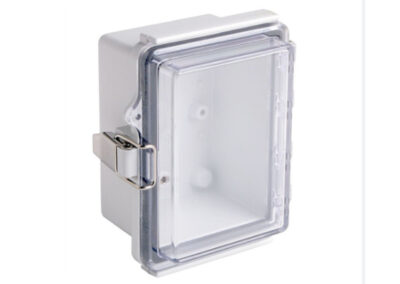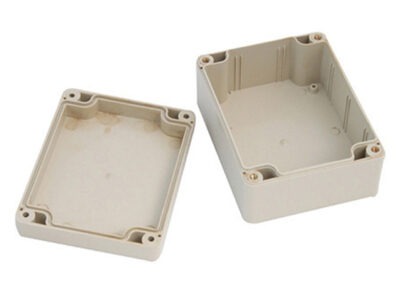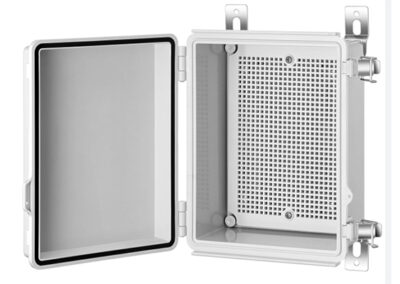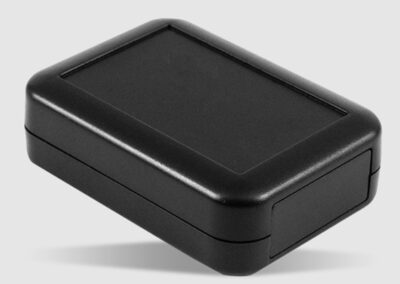Reliable Plastic Enclosure Manufacturer
In this article, we’ll take a closer look at the specific applications of plastic enclosures in different industries, as well as the innovative processes used to manufacture plastic enclosures, to help you more fully understand the value of this critical component.
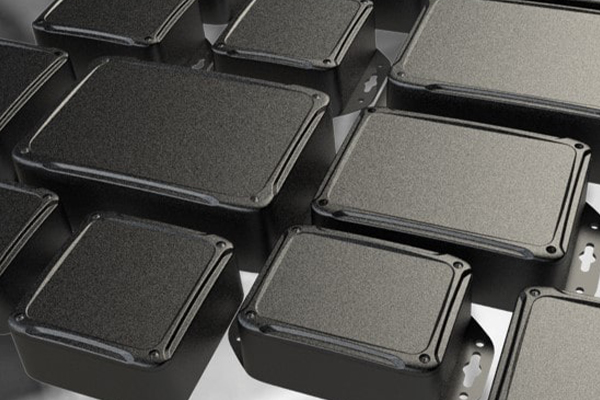
Browse Our Electrical and Electronic Enclosure Solutions
Plastic enclosures have become an important part of modern manufacturing due to their versatility, durability and customization capabilities, allowing a variety of equipment and systems in different industries to operate safely and reliably. The following are the specific applications of plastic enclosures in various industries:
-
- Waterproof: Keep your internal electronics safe and dry with our waterproof enclosures.
- General Use: General use enclosures are great for everyday electronics applications.
- Hinged: Our hinged enclosures aredesign for harsh industrial and commercial environments.
- Metal: Metal enclosures are available in durable aluminum, steel or stainless steel materials.
- NEMA 4X: NEMA 4X enclosures protect against a variety of harsh indoor or outdoor environmental conditions.
- Lockable: Secure your enclosures components with a built-in padlock hasp or quarter-turn latch.
- Electrical: Trust durable plastic enclosures for your electrical needs in outdoor environments.
- Flanged-Surface Mount: Flanged enclosures make it convenient to surface-mount your box to a wall or ceiling.
- Junction Box: Junction boxes are a versatile choice for your electronics or electrical application.
- Handheld: Handheld enclosures are available in a variety of styles, perfect for remote control application.
- Aluminum: Aluminum enclosures provide excellent durability, temperature tolerance and corrosion resistance.
- Plastic: Keep your electronics safe and protected in durable plastic enclosures.
- Outdoor: Protect components in dependable plastic or metal outdoor enclosures.
- Polycarbonate: Polycarbaonte enclosures provide added durability for electronic or electrical applications.
- UL Listed: Trust your product is protected when it is housed in a UL Listed enclosure.
- Knockout: Enclosures with knockouts offer the flexibility of onsite installation of cables, wiring or conduit.
- Steel: Heavy-duty steel enclosure will provide protection to your electrical equipment in harsh environments.
- Plug-In: Plug-in enclosure have been designed with a 15 AMP 120 VAC plug configuration.
- Desktop: Desktop enclosures can be used as instrument enclosures or for indoor table-top electronics.
Materials for Making Plastic Enclosures
Plastic enclosures can be made from a variety of plastic materials, each with its own characteristics and benefits. Material selection should consider factors such as mechanical strength, electrical properties, chemical resistance, UV resistance and temperature range. Additionally, the manufacturing process (such as injection molding or thermoforming) may also influence material selection. When choosing materials, talk to the manufacturer to choose the plastic material that best suits your enclosure needs. The following are some common plastic materials used to make plastic enclosures:
-
- Acrylonitrile Butadiene Styrene (ABS):
ABS is a versatile and widely used thermoplastic known for its excellent impact resistance, rigidity, and ease of processing. It is commonly used in consumer electronics, automotive parts, and enclosures for various devices. - Polycarbonate (PC):
Polycarbonate is known for its high impact resistance and optical clarity. It is used in applications requiring transparency, such as display screens, protective eyewear, and outdoor enclosures. - Polypropylene (PP):
Polypropylene is resistant to moisture, chemicals, and impact. It is often used in outdoor enclosures, battery cases, and automotive components. - Polyethylene (PE):
Polyethylene is a lightweight plastic with good chemical resistance. It is used in outdoor enclosures, pipe fittings, and storage containers. - Polyvinyl Chloride (PVC):
PVC is a versatile plastic known for its durability and chemical resistance. It is used in electrical enclosures, plumbing, and construction materials. - Polyurethane (PU):
Polyurethane is known for its flexibility and resilience. It is used in enclosures that need to withstand repeated bending or flexing, such as cable protectors. - Polyoxymethylene (Acetal, POM):
POM is a strong and rigid plastic with good dimensional stability. It is often used in mechanical components and small enclosures.
- Acrylonitrile Butadiene Styrene (ABS):
Techniques Used in Making Plastic Enclosures
The manufacturing of plastic enclosures involves various techniques and processes to create precise and customized components, allowing for versatility and customization. Sungplastic is a plastic enclosure manufacturer and we will select the appropriate processes and technologies based on your project to efficiently produce plastic enclosures that meet specific product needs. Here are some key technologies commonly used in making plastic enclosures and their benefits:
CNC Machining:
-
- CNC machining is used to create precise and detailed features on plastic enclosures. It involves subtractive manufacturing, where a computer-controlled machine removes material from a solid block of plastic to achieve the desired shape and finish. CNC machining is often used for prototyping and low- to medium-volume production runs.
- Advantages: Precision and versatility for producing complex shapes, tight tolerances, and prototypes. Ideal for low-volume and custom enclosures production.
Injection Molding:
-
- Injection molding is one of the most widely used processes for mass-producing plastic enclosures. It involves injecting molten plastic into a mold cavity, where it cools and solidifies to form the enclosure. Injection molding is suitable for high-volume production and can produce intricate designs with tight tolerances.
- Advantages: High production efficiency, cost-effectiveness for mass production, excellent dimensional accuracy, and repeatability. Suitable for intricate and detailed designs.
Blow Molding:
-
- Blow molding is typically used for creating hollow plastic enclosures, such as bottles or containers. It involves inflating a heated plastic parison (hollow tube) inside a mold to give it the desired shape.
- Advantages: Suitable for creating hollow and seamless enclosures, cost-effective for large volumes, excellent for lightweight containers and bottles.
Thermoforming:
-
- Thermoforming is used to create plastic enclosures by heating a flat sheet of plastic and then stretching or forming it over a mold using vacuum or pressure. This method is suitable for producing large, shallow, and relatively simple enclosures.
- Advantages: Cost-effective for producing large and shallow enclosures, quick tooling setup, and good for prototyping. Suitable for packaging and tray applications.
Overmolding:
-
- Overmolding is a process in which a plastic enclosure is produced by combining multiple materials or colors. A base layer or component is first molded, and then a second material is injected over it to create a composite enclosure. This is often used for adding soft-touch grips or colorful accents to enclosures.
- Advantages: Allows the integration of multiple materials and colors in a single enclosure, enhances product aesthetics, and offers ergonomic benefits (e.g., soft grips).
Insert Molding:
-
- Insert molding combines plastic molding with the incorporation of metal or other components within the enclosure. Metal inserts or components are placed in the mold, and plastic is molded around them, creating a secure bond.
- Advantages: Combines plastic and metal components in a single process, reducing assembly steps, and improving product integrity. Ideal for producing complex parts.
3D Printing:
-
- 3D printing, or additive manufacturing, is increasingly used for prototyping and small-batch production of plastic enclosures. Layer-by-layer additive techniques allow for complex geometries and customization.
- Advantages: Rapid prototyping, design flexibility, and customization. Suitable for low-volume production and complex, intricate enclosure designs.
Custom Plastic Enclosures Made for You
Plastic enclosures play an integral role in modern manufacturing. These enclosures not only protect the internal components from physical and environmental damage, but also provide aesthetic appearance and user-friendly design.
Sungplastic is a leading plastic enclosure manufacturer and our engineering team can design and prototype plastic enclosures to your specifications, ensuring your plastic enclosures are of the highest standard. We can provide a range of services such as injection molding, overmolding, CNC machining and more. We work closely with you throughout the entire production process to ensure that each enclosure is a perfect match to your ideas, and together we create a product plastic enclosure that meets your expectations.
Don’t hesitate, contact Sungplastic’s professional team immediately to start our cooperation and work together to create the perfect plastic enclosure.
Get a free quote and design analysis today.
We’ll reply to you within 6 working hours.
We respect your privacy.
+86 139 2927 4777 (WhatsApp, Wechat)

